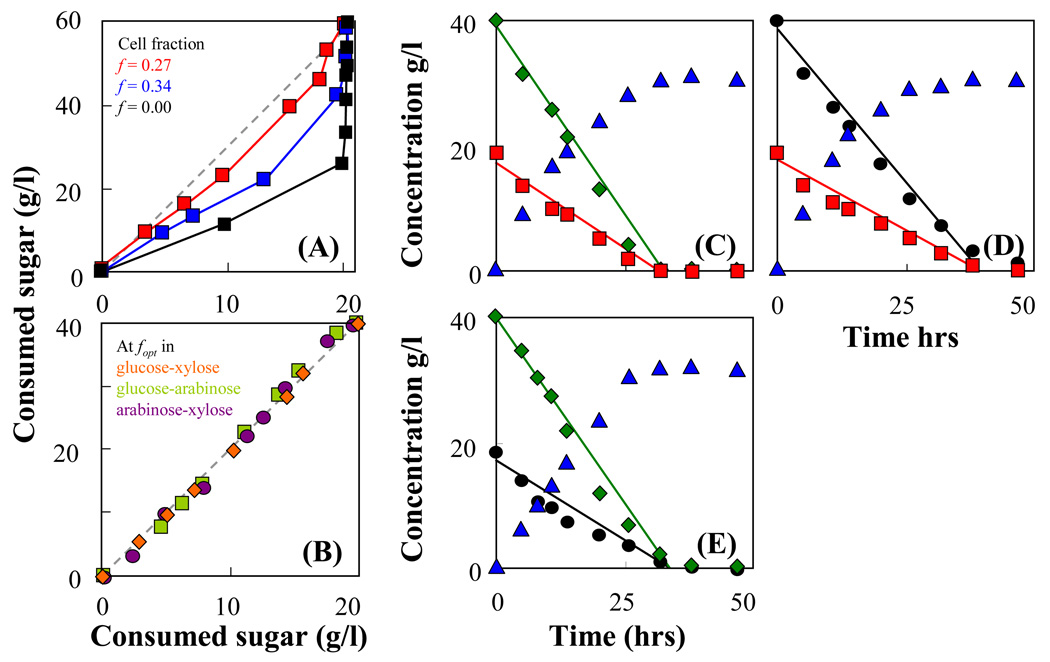Fig. 4.
Fermentation kinetics by immobilized mixed culture of AFF01/pLOI297 and CT1101/pLOI297. The experiments were performed in capped shake flasks containing 100 ml of semi-defined medium supplied with sugar mixtures and with 35 ml beads containing cell concentration of 10.2 g-CDW/l-gel. Optimal cell fraction fopt was determined from the kinetic model (see Equ. (14)). (A) Relation of consumed xylose with an initial concentration of 60 g/l and consumed glucose with an initial concentration of 20 g/l at the fraction of CT1101/pLOI297 cells used in the immobilization: f = 0.27 ( ), f = 0.34 (
), f = 0.34 ( ), f = 0 (
), f = 0 ( ). (B) Relation of consumed sugars in the mixture: glucose-xylose at cell fraction fopt = 0.41 (
). (B) Relation of consumed sugars in the mixture: glucose-xylose at cell fraction fopt = 0.41 ( ), glucose-arabinose at cell fraction fopt = 0.47 (
), glucose-arabinose at cell fraction fopt = 0.47 ( ), and arabinose-xylose at cell fraction fopt = 0.58 (
), and arabinose-xylose at cell fraction fopt = 0.58 ( ). (C) Immobilized mixed culture at the optimal cell fraction in a sugar mixture of glucose (
). (C) Immobilized mixed culture at the optimal cell fraction in a sugar mixture of glucose ( ) and xylose (
) and xylose ( ) converted into ethanol (
) converted into ethanol ( ). (D) Immobilized mixed cultures at the optimal cell fraction in a sugar mixture of glucose and arabinose (
). (D) Immobilized mixed cultures at the optimal cell fraction in a sugar mixture of glucose and arabinose ( ). (E) Immobilized mixed cultures at the optimal cell fraction in a sugar mixture of xylose and arabinose.
). (E) Immobilized mixed cultures at the optimal cell fraction in a sugar mixture of xylose and arabinose.

